Understanding and leveraging the best safety features in stun guns, such as advanced triggers, sensors, locks, ergonomic design, and user training, significantly reduces accidental discharges while enhancing their effectiveness for self-defense. Adherence to regulatory standards by reputable manufacturers further minimizes risks associated with these non-lethal personal safety tools.
Accidental discharge of stun guns can have severe consequences, hence, understanding and implementing robust prevention mechanisms is paramount. This article delves into comprehensive strategies to mitigate risks associated with accidental triggers, exploring advanced trigger mechanisms, smart sensors, user training, physical design considerations, and regulatory standards. By examining these key aspects, we uncover the best safety features in stun guns, ensuring responsible use and enhancing public safety.
- Understanding Accidental Discharge Risks
- Advanced Trigger Mechanisms for Safety
- Smart Sensors and Their Role in Prevention
- User Training: A Key Defense Layer
- Physical Design Considerations for Control
- Regulatory Standards and Best Practices
Understanding Accidental Discharge Risks
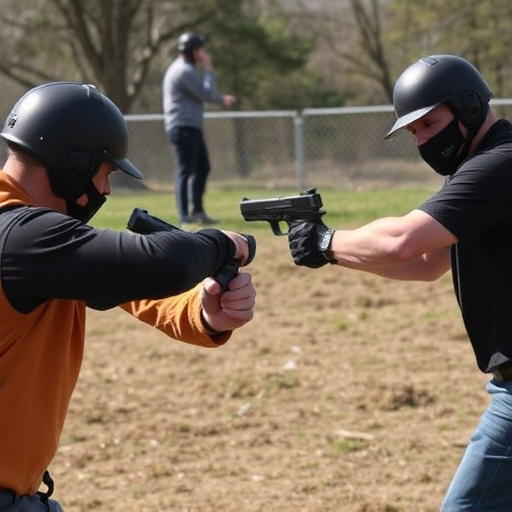
Accidental discharge, an unfortunate event that can have severe consequences, is a primary concern when considering stun guns as personal protection devices. Understanding potential risks is essential to making informed decisions about self-defense tools. The best safety features in stun guns play a pivotal role in mitigating these dangers.
One of the key mechanisms to prevent accidental activation is the inclusion of advanced trigger systems. These innovative designs incorporate sensitive pressure sensors and smart circuitry, ensuring that the device remains inactive until intended use. Additionally, some models employ safety locks or guards, further minimizing the likelihood of unintended discharge. By combining these safety features with proper user education, individuals can confidently utilize stun guns as powerful tools for self-defense while significantly reducing accidental discharge risks.
Advanced Trigger Mechanisms for Safety
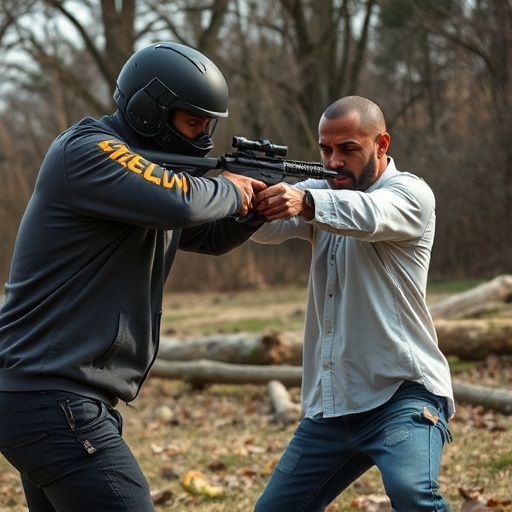
The best safety features in stun guns include advanced trigger mechanisms designed to prevent accidental discharge. These innovative triggers employ sophisticated sensors and safety locks, ensuring the device activates only when intended. Some models use pressure-sensitive triggers that require a firm, deliberate press, reducing the risk of accidental activation during pocket carry or unexpected situations.
Additionally, smart circuits and microprocessors monitor voltage levels and current flow to prevent overloading and overheating, further enhancing safety. These advanced trigger mechanisms are pivotal in mitigating risks associated with stun guns, making them safer for personal protection without compromising effectiveness.
Smart Sensors and Their Role in Prevention
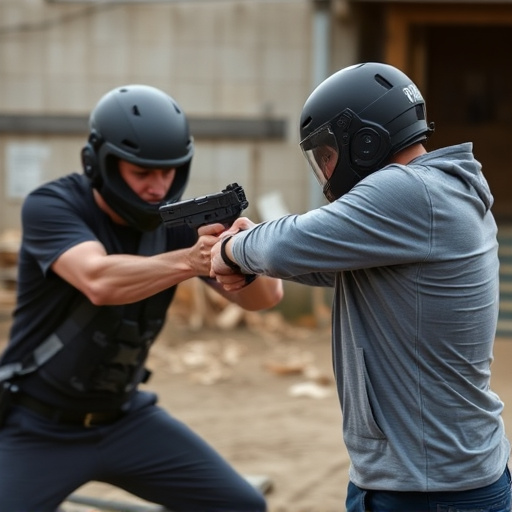
Smart sensors play a pivotal role in enhancing the safety features of stun guns, making them more effective tools for personal protection. These advanced sensors are designed to detect and respond to various environmental cues, ensuring that the stun gun only activates when necessary, thus preventing accidental discharges. By utilizing motion sensors and proximity sensors, these devices can discern between a user’s intent and unintended movements, significantly reducing the risk of unwanted shocks.
Incorporating smart technology into stun guns allows for precise control and monitoring. The best safety features in stun guns now include real-time feedback systems that inform users about battery life, sensor activity, and activation status. This not only empowers individuals to make informed decisions regarding their personal safety but also adds an extra layer of protection against accidental triggers, making them ideal for self-defense enthusiasts seeking reliable and secure solutions.
User Training: A Key Defense Layer
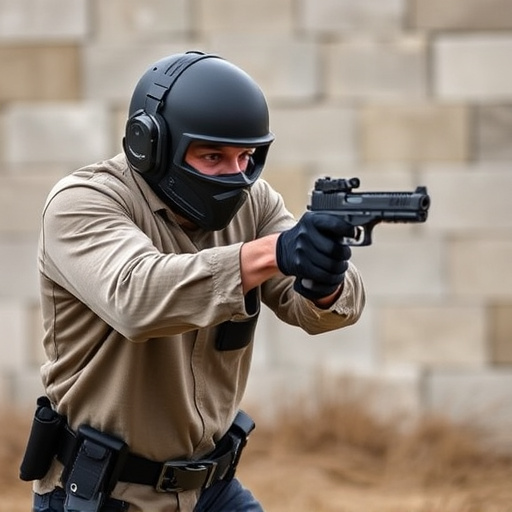
User training is a fundamental aspect of accidental discharge prevention, especially for stun guns equipped with advanced safety features. Beyond merely teaching users how to activate the device, comprehensive training sessions should cover safe handling practices, including identifying and understanding various modes, proper grip techniques, and recognizing potential triggers that could lead to unintentional deployment.
Equipping users with knowledge about these best safety features in stun guns empowers them to make informed decisions when facing potentially dangerous situations. It acts as a crucial defense layer, minimizing the risk of accidental discharges while ensuring users can effectively deploy the device for self-defense when needed.
Physical Design Considerations for Control

The physical design of a stun gun plays a pivotal role in accidental discharge prevention. Incorporating robust safety features is essential, especially considering the device’s potential impact on user and bystander safety. Best safety features in stun guns include mechanical locks, which physically prevent the trigger from being squeezed unless intentionally released, and smart sensors that detect body contact or movement to activate the device, minimizing the risk of accidental activation.
Additionally, ergonomic design choices can significantly reduce mishandling risks. Gripped devices with non-slip surfaces ensure users have a firm, secure hold, decreasing the likelihood of unintentional pressure on the trigger. These physical design considerations work in tandem with proper user training and awareness to create a comprehensive safety framework for stun guns, ensuring their responsible use and maximizing their effectiveness as personal safety tools.
Regulatory Standards and Best Practices
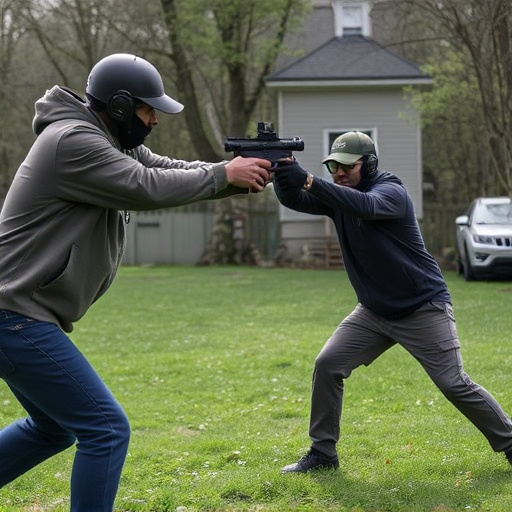
Regulatory standards and best practices play a pivotal role in accidental discharge prevention mechanisms, especially for stun guns, one of the most popular non-lethal self-defense tools. Reputable manufacturers adhere to stringent guidelines set by organizations like the National Fire Protection Association (NFPA) and Underwriters Laboratories (UL), ensuring that their products meet rigorous safety criteria. These standards encompass a range of critical factors, such as electrical design, mechanical construction, and user-friendly features, all geared towards minimizing the risk of unintended activation.
The best safety features in stun guns often include multiple safety switches and trigger mechanisms, designed to prevent accidental discharge. Some advanced models incorporate smart sensors that detect body contact or movement before allowing the device to activate, further reducing the likelihood of unintended use. By combining these mechanical and electronic safeguards with comprehensive training on safe handling practices, users can maximize the effectiveness of their stun guns while minimizing potential hazards.
Accidental discharge is a critical concern in personal defense devices, especially stun guns. By understanding the risks, leveraging advanced trigger mechanisms, integrating smart sensors, focusing on user training, and considering physical design, manufacturers can create best-in-class safety features. Adhering to regulatory standards and best practices ensures that these life-saving tools are both effective and responsible, ultimately promoting public safety in an increasingly diverse world. The best safety features in stun guns aren’t just about technology; they’re about a comprehensive approach that combines innovation, education, and regulation.
